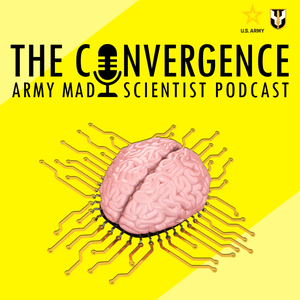110. Generative AI: The New Ammunition in the Data Arms Race with Ben Van Roo
[Editor’s Note: Today’s The Convergence podcast welcomes back Ben Van Roo, recent author of our Unlocking TRADOC’s Potential with GenAI: Opportunities and Challenges blog post, to continue our exploration of the transformative potential of Generative Artificial Intelligence (Gen AI) — specifically its ability to democratize access across the U.S. Army to the vast reservoirs of Operational Environment information. In ingesting all of the OE Data Integration Network’s (ODIN) content — including the Worldwide Equipment Guide (WEG), Decisive Action Training Environment (DATE) and accompanying Force Structures, the Army Techniques Publication (ATP) 7-100 series, and the Training Circular (TC) 7-100 series — Gen AI offers the potential to respond to conversational queries from individual Soldiers with the TRADOC G-2’s aggregated and authoritative OE knowledge. Operationally, Gen AI could also help accelerate the OODA (Observe, Orient, Decide, and Act) loop, the intelligence cycle, and even kill chains — powerful stuff, indeed…. Read on!]
Ben Van Roo is the Co-Founder and CEO of Yurts, a generative AI company partnering with the U.S. Department of Defense to advance mission-critical systems. He holds a PhD in Operations Research and has significant experience developing AI solutions for defense and national security applications.
In our latest episode of The Convergence podcast, Army Mad Scientist sits down with Ben Van Roo to discuss Generative Artificial Intelligence (Gen AI) models, how they can be integrated into secure networks, and how TRADOC can use them to enhance Army training. The following bullet points highlight key insights from our conversation.
Classic AI models could provide rudimentary identification abilities, whereas Gen AI is a newer class of modelswith the capability to produce long form documents, generate and critique ideas, and create new images, video, and music.
The technology enabling Gen AI is moving at a rapid pace. As soon as a new model is available, competitors and adversaries will use that newer model to upgrade their own, fostering a rapid learning and adaptation cycle. When thinking about the geopolitical implications and competition, there is a very tight timeline of advantagebetween open-source communities, proprietary model vendors, and the U.S. and other countries.
Where Gen AI is useful today is plugging into pre-existing systems andaugmenting the processes that already exist. TRADOC’s mission of preparing the Warfighter in basic aspects of readiness, for different environments (e.g., Decisive Action Training Environment [DATE]), understanding our adversaries’ materiel capabilities in the Worldwide Equipment Guide, and much more is a perfect use case for employing the current state of Gen AI technology.
While DoD is experimenting with Gen AI in aspects such as computer vision or Course of Action development, it is more suited to bridge the gap between the technology vendors and the Warfighters. The Government lacks what a large venture-backed company with a sole focus on writing Gen AI software can provide.
For large organizations like the DoD, within the next 2 to 3 years, the fundamental focus will be on how to bring Gen AI into production— how it’s integrated, where it shouldn’t be, and how management, costs, and analytics will be conducted.

